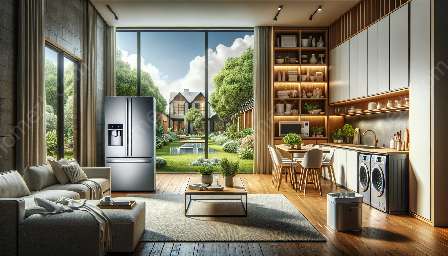When it comes to creating a peaceful and comfortable living environment, effectively soundproofing home air conditioners and other household appliances plays a crucial role. In this comprehensive guide, we explore various soundproofing options for home air conditioners, their compatibility with noise control solutions for household appliances, and the broader subject of noise control in homes.
Understanding the Importance of Soundproofing Home Air Conditioners
Home air conditioners are essential for maintaining a pleasant indoor climate, but their noise can sometimes lead to significant disturbances. Whether it is the buzzing of the compressor or the whirring of the fan, the noise from air conditioners can disrupt peace and quiet in the home, especially during the summer months when the units are in constant operation.
Additionally, for individuals and families living in close proximity to neighbors or busy streets, soundproofing home air conditioners becomes even more critical as it helps create a serene and undisturbed living space. Fortunately, there are various soundproofing options available to mitigate the noise produced by these essential appliances.
Soundproofing Options for Home Air Conditioners
There are several effective soundproofing solutions specifically designed for home air conditioners. These options not only reduce the noise generated by the units but also contribute to energy efficiency and overall performance. Some of the most popular soundproofing options for home air conditioners include:
- Acoustic Foam: Acoustic foam panels effectively absorb and dampen sound waves, reducing the noise emitted by air conditioners. These panels are available in various shapes and sizes and can be easily installed around the air conditioning unit to minimize noise transmission.
- Soundproofing Blankets: Soundproofing blankets, also known as isolation pads, are designed to wrap around air conditioning compressors and dampen vibrations, thereby reducing noise transmission. These blankets are often made of dense, insulating materials such as mass-loaded vinyl (MLV) or mineral wool, providing an effective barrier against airborne and impact noise.
- Vibration Isolators: Vibration isolators are designed to absorb and isolate the vibrations produced by air conditioner units, preventing them from transmitting through the structure of the home. These isolators are installed between the air conditioner and the mounting surface, effectively reducing noise transfer to the surrounding areas.
- Barrier Walls: Constructing barrier walls or enclosures around air conditioning units can significantly reduce the transmission of noise to the surrounding environment. These walls are typically constructed using soundproofing materials such as high-density fiberglass or acoustic panels and can be customized to fit the specific dimensions of the air conditioner.
Compatibility with Noise Control Solutions for Household Appliances
While soundproofing options for home air conditioners are crucial, it is equally important to consider noise control solutions for other household appliances to achieve comprehensive peace and quiet within the home. Many of the soundproofing materials and techniques used for air conditioners can also be applied to other noisy appliances, such as refrigerators, dishwashers, washing machines, and HVAC systems, ensuring a harmonious living environment.
Implementing noise control solutions for household appliances involves assessing the unique noise sources of each appliance and applying suitable soundproofing methods. This may include using acoustic barriers, vibration-dampening materials, and soundproofing enclosures to effectively minimize the noise generated by these appliances.
Noise Control in Homes
Beyond addressing the noise produced by individual appliances, noise control in homes encompasses a broader spectrum of techniques and solutions aimed at creating tranquil living spaces. From addressing external noise sources such as traffic or neighbors to minimizing internal noise transmission between rooms, comprehensive noise control in homes involves a multi-faceted approach.
To achieve optimal noise control in homes, it is essential to consider factors such as building construction, insulation, window and door treatments, and the strategic placement of sound-absorbing materials. Additionally, the integration of modern technologies, such as smart home automation systems with sound monitoring capabilities, can further enhance noise control and overall comfort within the home.
Conclusion
By understanding soundproofing options for home air conditioners, their compatibility with noise control solutions for household appliances, and the broader subject of noise control in homes, homeowners can proactively create serene and peaceful living spaces. Implementing effective soundproofing techniques not only reduces the impact of appliance noise but also contributes to overall comfort and well-being. Whether through the use of acoustic panels, vibration isolators, or barrier walls, the implementation of soundproofing solutions can significantly enhance the quality of life within the home.


